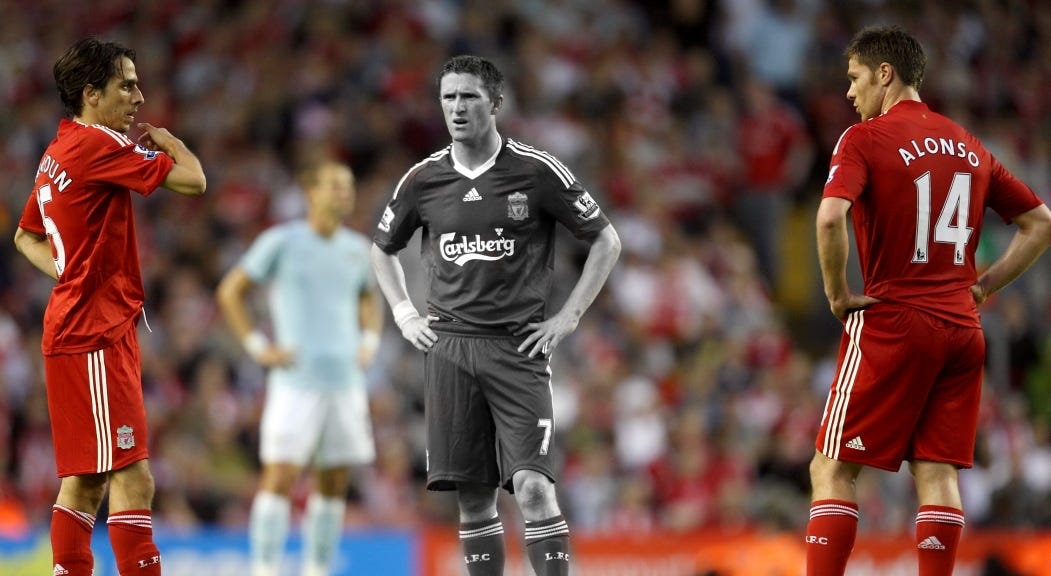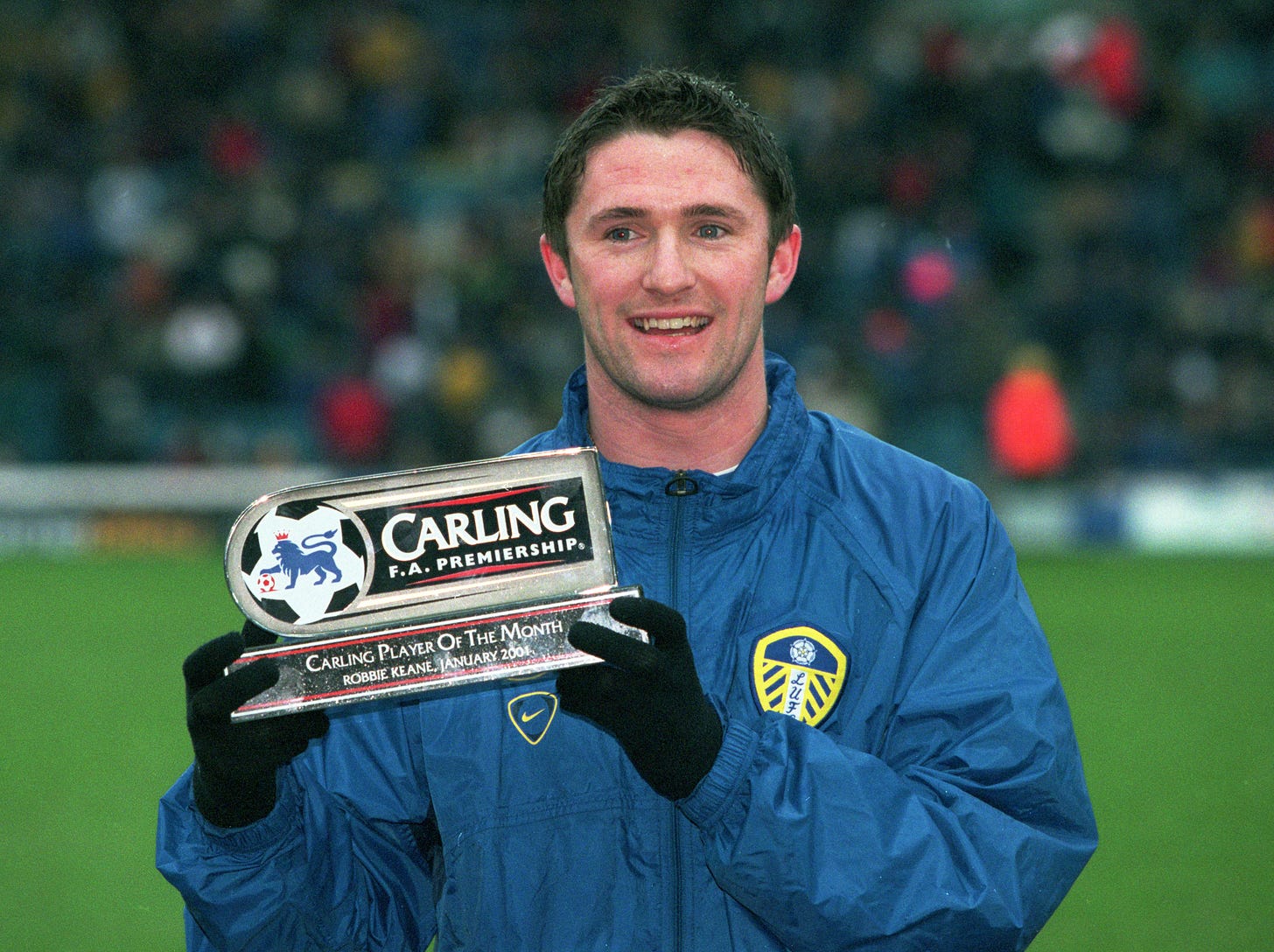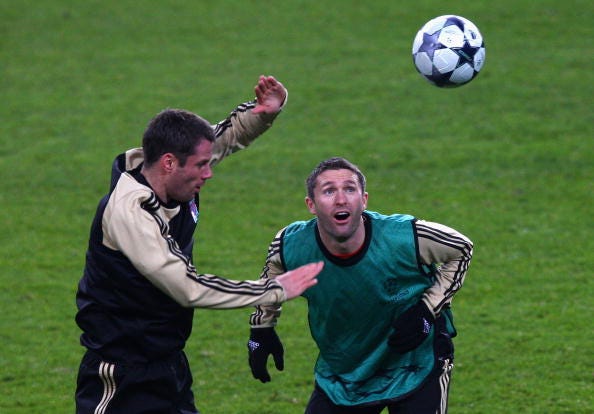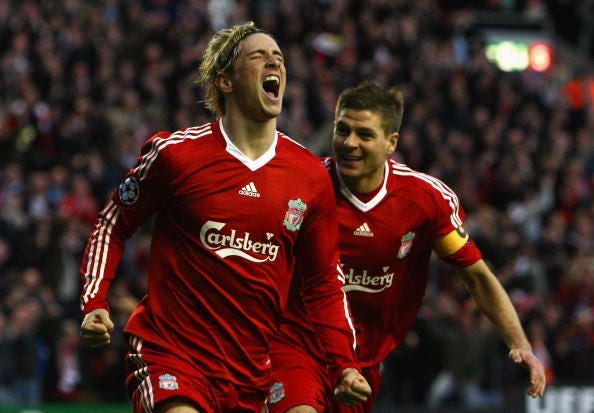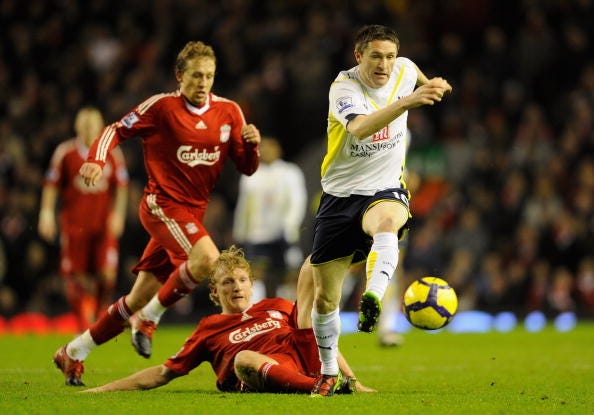Right time, wrong manager: Why Robbie Keane’s transfer to Liverpool failed
A piece about Robbie Keane's short-spell with Liverpool, and why it went wrong. I interviewed Jamie Carragher for this article. First published July 28, 2019.
“He tried to turn me into something I’m not.”
In a career full of transfers, Robbie Keane had two moves to elite clubs – Inter Milan and Liverpool. Both only lasted a couple of months.
Keane had just turned 20 when Inter Milan paid Coventry City £13m for him. Marcello Lippi, the Inter manager, said that the Irishman was one of the best young players in Europe that summer.
Lippi, however, was sacked after Inter lost their first match of the season, a decision that effectively ended Keane’s time in Italy. Marco Tardelli, Lippi’s successor, had no place for the young striker in his plans. After 14 appearances, three goals, and four months in Milan, Keane was back in English football, joining Leeds United on loan.
Keane’s failed transfers
Looking back, it could be argued that Keane’s move to Serie A came too soon. His career was only starting, Serie A was the pinnacle of club football and Inter already had an incredible collection of forwards.
However, the same can’t be said of Keane’s brief stint with Liverpool eight years later. He joined the club for £19m in the peak years of his career. A seasoned Premier League player, having netted 92 goals in the division, Keane was also a leader, Tottenham Hotspur’s captain, and the Dubliner wouldn’t be fazed by moving to one of Europe’s best teams.
Yet, once again, his dream transfer only lasted a few months. Just 189 days after swapping White Hart Lane for Anfield, after seven goals in 28 games, Keane returned to Spurs. Yet again, his stint at an elite club was defined by his manager.
Robbie Keane at Liverpool
Rafa Benitez told Keane that he had been signed to play alongside Fernando Torres, who was, at that time, still the most feared striker in the Premier League. At Spurs, the Irishman had formed a prolific partnership with Dimitar Berbatov and appeared to be the perfect foil for Torres.
Benitez wasn’t convinced by the Dubliner though, an issue that was instantly evident. Keane knew just 20 minutes into his first game for the club that it wouldn’t work. He inherited the number 7 seven shirt worn by Kenny Dalglish and Kevin Keegan, but Benitez sought to turn Keane into the new Dirk Kuyt.
“He wanted to change me to a left-winger,” Keane said.
“And, I mean I’m clearly not a left winger, and that’s obviously clear for everyone to see.
“The first 20 minutes he wanted me to play left wing and I had never played it before, so it was kind of new to me.”
“Him and Benitez just never clicked”
Keane wasn’t the only one to detect Benitez’s coldness towards him.
“Him and Benitez just never clicked,” Jamie Carragher said. The former Liverpool defender believes that there “was always going to be tension” between the pair, given the type of player Keane was and Benitez’s outlook as a coach.
“Rafa is, as a defender, one of the best managers you could have,” Carragher continued.
“But as an attacker, you’d be a bit like, ‘Just let me go and play’. Everything is structured and organised.
“I think (Craig) Bellamy was the same. A lot of the English lads who came found it difficult – (Peter) Crouchy, Jermaine Pennant – with Rafa and the way he went about things from an attacking point of view. (He would be) asking them where to be, ‘when the ball’s there, you go there’. Whereas I think a lot of those lads, they just want to go and play and be free.”
Robbie Keane finds his form
Keane didn’t score his first goal for the club until October and was rarely used in his natural position. With Torres’ season disrupted by injuries, he was often tasked with playing as a centre-forward. In his 28 appearances for the club, the Irishman was substituted 19 times by Benitez, including during a game against West Brom when he needed one more goal for a hat-trick.
Keane’s time at the club peaked with a stunning goal against Arsenal in a 1-1 draw in December 2008, a month before his departure. He raced onto a long punt up the pitch, took a quick look to see where the goalkeeper was standing, let the ball bounce over his shoulder and smashed a shot beyond Manuel Almunia, silencing the home supporters at the Emirates.
Despite having his confidence tested by Benitez, Keane’s instincts in front of goal were as sharp as ever.
“That was always going to be a recipe for disaster”
However, there was only so much he could put up with. A few days after that goal against the Gunners, the forward scored twice against Bolton Wanderers at Anfield. He was beginning to hit form.
'A few weeks later, he wasn’t even included in the matchday squad for an FA Cup tie against Everton, with Benitez putting David N’Gog on the bench as Steven Gerrard played behind Torres. This proved to be the final straw for Keane. He returned to Spurs, “baffled” at how it worked out at Anfield, but maintains that he wasn’t bitter.
“I respect every manager I’ve worked with,” he said a few years later.
“They all have their ideas, different ideas, and whether I agree with them it doesn’t matter. Tactically he was probably one of the best I’ve worked with. He knows the game inside out. But he tried to turn me into something I’m not, and that was always going to be a recipe for disaster as someone used to scoring goals.”
Carragher was also confused by the transfer, but not in the same way as Keane. The Sky Sports pundit was surprised that Liverpool even signed Keane, given they already had a world-class player in his position – Gerrard.
“I’ll be honest with you, I didn’t understand why we bought Robbie Keane in the first place,” Carragher said, before stating that he did not “want this to be some big headline.”
“What I mean by that is, Robbie was a top player for Tottenham, but the season before, Steven Gerrard had started playing alongside Torres. So, Torres was the striker, Gerrard was the number 10. We did it for the second half of the season, and I think Stevie scored 20 goals and set up 20. Stevie was the player of the year and we had Torres up-front.
“So, when we signed Robbie Keane, I was a bit like, ‘Why would you break that up?’ People might say, ‘You put Stevie back in midfield’. But he was playing that well there. It was a surprise, to be honest when he came in. And Robbie’s problem was that Torres was injured a lot. So, he ended up playing centre-forward with Stevie behind him.”
“Under a different manager, I’m sure it would have worked.”
“He should have been given more of a chance,” Carragher continues.
“You see what he’s done in the Premier League throughout his career, he’s been a great player for the different clubs he’s had. I just think maybe it was the wrong time, wrong manager. But I say ‘the wrong manager’. Rafa Benitez might say ‘The wrong player’. Under a different manager, I’m sure it would have worked.”
The former Liverpool defender also rightly acknowledges that Keane joined a side who were “probably in the best two or three teams in Europe” at that time, with Gerrard, Torres and Xabi Alonso the standout players. It would have been difficult for any attacking player to improve Liverpool at that time. For the first time since his short stint at Inter Milan, the Republic of Ireland captain wasn’t the star player in his team.
However, given his professionalism and dedication, this was only a minor factor in Keane’s disappointing spell on Merseyside. It is difficult to look beyond Benitez as the reason why Keane’s move was unsuccessful.
The Spaniard was one of the most tactically astute managers in Europe. Yet, one has to question the logic of allowing Keane to leave mid-way through a title challenge when Torres had fitness issues and the only backup options were David N’Gog and Ryan Babel.
Liverpool convincingly beat Man United home and away that season but finished four points behind them. Could Keane have turned three of their 11 draws into victories? It is difficult to know for sure. But there was more chance of him finding the net than either N’Gog and Babel. Upon returning to White Hart Lane, Keane scored five goals in 14 Premier League games for Spurs in the second half of the 2008/09 season.
Yet, Benitez was engaged in a power battle with Liverpool’s American owners Tom Hicks and George Gillett. Keane was collateral damage. He seemingly cut his nose off to spite his face by prematurely selling the Dubliner. Ironically, Keane scored for Spurs against Liverpool at Anfield on the final day of the season. By then though, Liverpool had lost out on the league title.
Over a decade later, Keane’s move to Liverpool remains the most expensive Irish transfer to date and the last one involving an Irish player joining the first team of an elite club.
First published on July 28, 2019.


